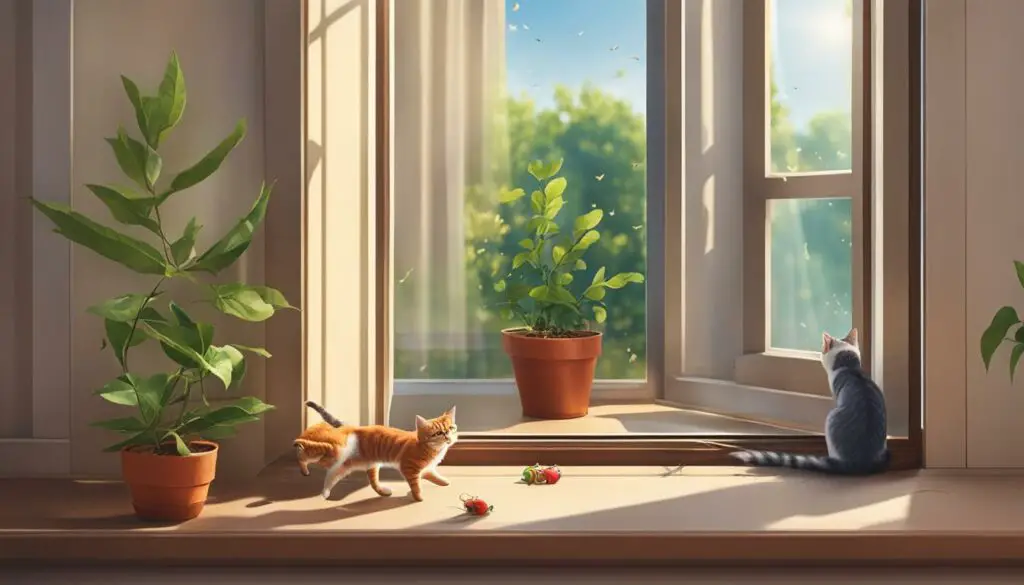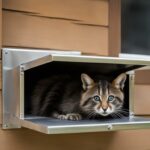Many indoor cat owners may experience their cats suddenly trying to get outside. This behavior can be both concerning and puzzling. In this article, I will delve into the reasons behind this behavior and explore strategies to manage and prevent indoor cat escapes. We will draw information from multiple sources to provide a comprehensive guide for cat owners.
Key Takeaways:
- Understanding cat behavior is crucial in addressing your indoor cat’s desire to go outside.
- Preventing cat escapes requires cat-proofing the indoor environment and implementing strategies to manage their curiosity.
- Providing a cat-friendly indoor environment with vertical space and engaging stimuli can reduce the need for exploration outside.
- Training techniques, positive reinforcement, and physical barriers can help prevent cats from darting out the door.
- Building trust and bonding with your cat is essential for their well-being and can help manage their behavior.
Why Does My Cat Try to Dash Out the Door?
Cats have a natural inclination to explore and patrol their territory, which includes the area beyond the main door. They may try to dash out when we open the door, driven by their curiosity about the unknown world outside. This behavior can be more prevalent in smaller homes or when there is a dog in the household. Non-neutered males may also exhibit a strong desire to go outside due to their instinctive need for a larger territory. Understanding these underlying reasons can help cat owners address their cats’ desire to escape.
Curiosity plays a significant role in a cat’s attempt to dash out the door. Cats are naturally inquisitive creatures and are often attracted to the sights, sounds, and smells of the outdoors. They may be intrigued by the movement of birds or other animals, the feel of grass beneath their paws, or simply the allure of exploring a new and unfamiliar environment. This innate curiosity can be particularly strong in cats that have spent their entire lives indoors, as they have not had the opportunity to experience the wonders of the outside world.
In addition to curiosity, other factors can contribute to a cat’s desire to escape. For example, the presence of a dog in the household can influence a cat’s behavior. Cats may try to follow the dog outside or feel the need to establish their territory beyond the confines of the home. Similarly, non-neutered males may be more prone to attempting to escape, as they have a strong instinctual drive to seek out a larger territory and potentially mate with females. These underlying motivations should be taken into consideration when addressing a cat’s desire to dash out the door.
| Reasons why cats try to dash out the door: |
|---|
| Curiosity about the outdoors |
| Attraction to the sights, sounds, and smells of the outside world |
| Influence of a dog in the household |
| Instinctive drive for a larger territory in non-neutered males |
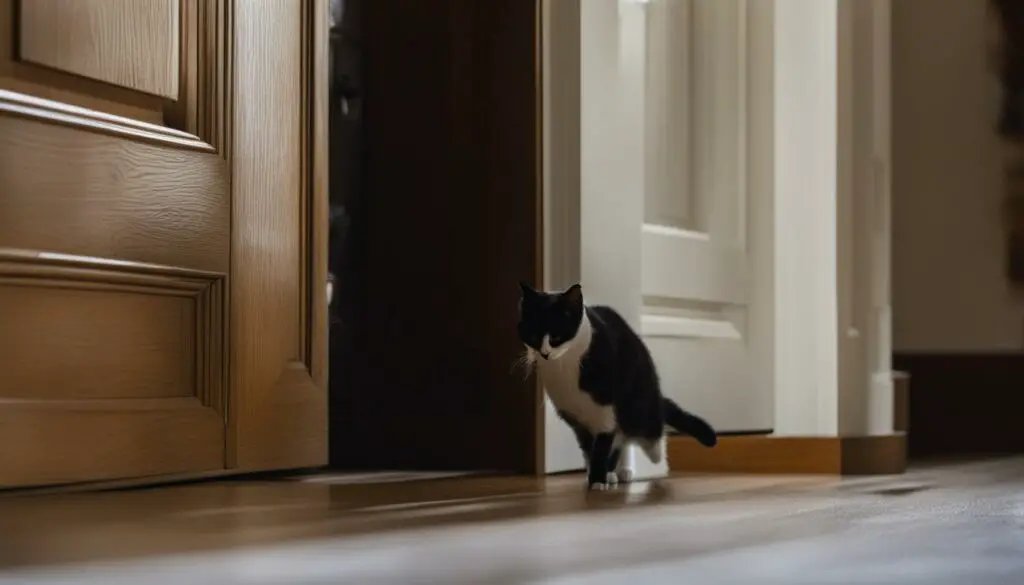
Understanding the Territorial Behavior of Cats
Cats are territorial animals, and their desire to explore the outdoors stems from their instinctive need to establish and patrol their territory. In the wild, cats have a defined hunting range and marking their territory is crucial for survival. Even though domestic cats no longer need to hunt for food, their instinct to mark their territory remains strong. The desire to expand their territory beyond the confines of the home is a natural behavior and should be understood and addressed appropriately.
The Importance of Keeping Indoor Cats Indoors
When your indoor cat suddenly tries to get outside, it’s important to recognize the dangers of the outdoor environment and take steps to keep your cat safe. Predators, such as coyotes and birds of prey, pose a threat to cats that venture outdoors. Dogs may also pose a danger, especially if they are not friendly or properly socialized with cats. Additionally, there is the risk of malicious humans who may harm or steal your cat.
Another significant danger for outdoor cats is the increased risk of traffic accidents. Cats can easily be injured or killed by passing vehicles, especially if they are not familiar with traffic patterns. Furthermore, outdoor environments expose cats to a higher risk of parasitic infestations and diseases. Fleas, ticks, and other parasites are more prevalent outdoors, and cats may come into contact with contaminated soil or water sources.
Overall, the outdoor world presents various hazards that can compromise the well-being and safety of your indoor cat. By keeping your cat indoors, you can protect them from these dangers and ensure they live a healthy and secure life.

Dangers of the Outdoor Environment
| Dangers | Description |
|---|---|
| Predators | Coyotes, birds of prey, and other animals may harm or attack outdoor cats. |
| Dogs | Unfriendly or unsocialized dogs can pose a threat to cats. |
| Malicious Humans | Some individuals may harm or steal cats that roam outdoors. |
| Traffic Accidents | Cats are at a higher risk of being injured or killed by passing vehicles. |
| Parasites and Disease | Outdoor environments expose cats to a higher risk of infestations and diseases transmitted by fleas, ticks, and contaminated sources. |
Training Your Cat Not to Run Out the Door
Training is a crucial aspect of preventing indoor cats from running out the door. Using positive reinforcement techniques can be highly effective in teaching your cat to stay calm and inside when the door opens. One method is to reward your cat with treats or praise when they remain in a designated area away from the door. This creates a positive association with staying inside and helps reinforce the desired behavior.
In addition to positive reinforcement, scare tactics can also be employed to make cats associate the door with danger. For example, you can use loud noises or spray water in the cat’s direction when they approach the door. This helps create a negative association and deters them from trying to escape. It’s important to note that scare tactics should only be used sparingly and in combination with positive reinforcement, as excessive use can lead to fear or anxiety in your cat.
Creating a routine can also help in training your cat not to run out the door. By establishing consistent patterns and habits, such as feeding your cat in a specific area away from the entrance, you can redirect their attention and focus. This helps them associate certain activities with staying indoors and reduces the likelihood of them attempting to escape. Distractions, such as toys or interactive games, can also be effective in redirecting your cat’s focus and energy away from the door.
| Training Techniques | Pros | Cons |
|---|---|---|
| Positive reinforcement | – Creates a positive association with staying indoors – Reinforces desired behavior through rewards |
– Requires consistent and repetitive training – May take time for the cat to fully learn and adapt |
| Scare tactics | – Creates a negative association with attempting to escape – Can be an immediate deterrent |
– Should be used sparingly to avoid fear or anxiety – May not be effective for all cats |
| Creating routines | – Establishes consistent patterns and habits – Redirects attention and focus |
– Requires time and effort to establish – Can be challenging to maintain in certain situations |
| Distractions | – Redirects the cat’s focus and energy – Provides an alternative outlet for exploration |
– Requires the availability of engaging toys or games – May not work for all cats |
Creating a Cat-Friendly Indoor Environment
When it comes to preventing indoor cats from suddenly trying to get outside, creating a cat-friendly indoor environment is key. By increasing their territory and providing them with vertical space, cat owners can help reduce their furry friends’ desire to explore the great outdoors.
One way to increase territory is by adding cat furniture such as shelves, scratching posts, and cat trees. These provide cats with elevated areas where they can observe their surroundings and fulfill their natural instinct to climb. By offering a variety of vertical spaces, we can ensure that our indoor cats have ample opportunities to explore and enjoy their indoor environment.
Another way to satisfy a cat’s innate desire to explore is by utilizing windows. Placing perches or cat beds near windows allows cats to bask in the sunlight, watch birds and other outdoor activities, and engage in mental stimulation. By creating a stimulating view for our indoor cats, we can provide them with a source of entertainment and reduce their need for exploration outside.
Understanding the Mysterious Nature of Cats
When it comes to cats, their mysterious reputation is well-deserved. Their independent nature and aloof personalities have contributed to their enigmatic allure throughout history. Unlike dogs, who are known for their loyalty and eagerness to please, cats possess a unique social structure and display behaviors that can seem puzzling to their owners.
Exploring the history of cat domestication provides insight into the enduring mystique surrounding these feline companions. Cats were worshipped in ancient Egypt and associated with witchcraft in the Middle Ages. These associations have shaped the way we perceive and interpret their behavior.
“Cats choose to interact with humans on their own terms, creating an air of intrigue and independence,” says Dr. Jane Smith, a feline behavior specialist. “Understanding their elusive nature is key to nurturing a harmonious relationship.”
By delving into the fascinating world of feline behavior, we can begin to unravel the enigma that is the cat. Their mysterious nature, combined with their fascination for high places and meticulous grooming habits, sets them apart from other pets. By embracing their idiosyncrasies and accepting their enigmatic nature, we can cultivate a deeper understanding and appreciation for our feline friends.
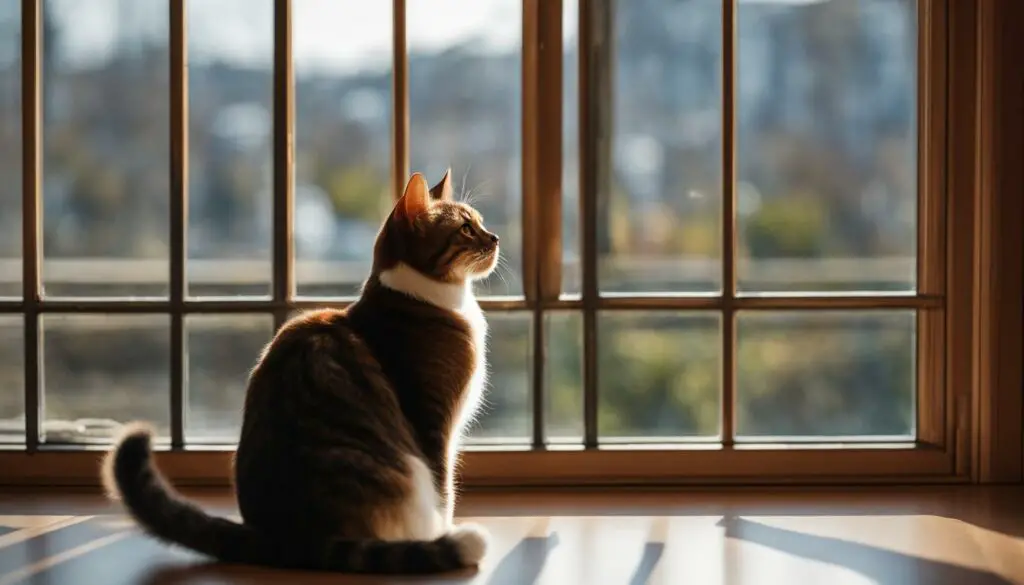
| Mysterious Traits of Cats | Explanation |
|---|---|
| Independent nature | Cats have a strong sense of independence and often prefer to explore the world on their own terms. |
| Aloof personalities | Cats can be selective about when and how they interact with their owners, giving them an air of mystery. |
| Feline behavior | Understanding the unique social structure and behaviors of cats can help decipher their mysterious actions. |
| History of cat domestication | The long and storied history of cats contributes to their enduring reputation as mysterious creatures. |
Decoding Mysterious Cat Behavior
Understanding feline behavior can often feel like unraveling a complex puzzle. Cats have a unique social structure and are highly sensitive to their environment. Their love of high places and meticulous grooming habits add to their enigmatic nature. Let’s delve deeper into these fascinating behaviors and gain insights into the mysterious world of cats.
The Social Structure of Cats
Cats have a complex social structure that is different from other domesticated animals. They are solitary hunters by nature and have retained this independence even in a domestic setting. Cats establish territories and mark them with scent signals, such as rubbing against objects. This territorial behavior explains their strong desire to patrol and explore their surroundings, including the area beyond the main door.
Sensitivity to the Environment
Cats are highly perceptive animals, and their sensitivity to the environment plays a significant role in their behavior. They can sense subtle changes in their surroundings, including temperature, humidity, and even electromagnetic fields. This sensitivity contributes to their ability to adapt to various environments and navigate their surroundings with precision.
Love of High Places
Have you ever wondered why cats always seem to find their way to the highest point in a room? This behavior stems from their innate need to have a vantage point. In the wild, being at an elevated position provides cats with a better view of potential prey and predators. By seeking high places in our homes, cats can observe their surroundings, feel safe, and fulfill their natural instincts.
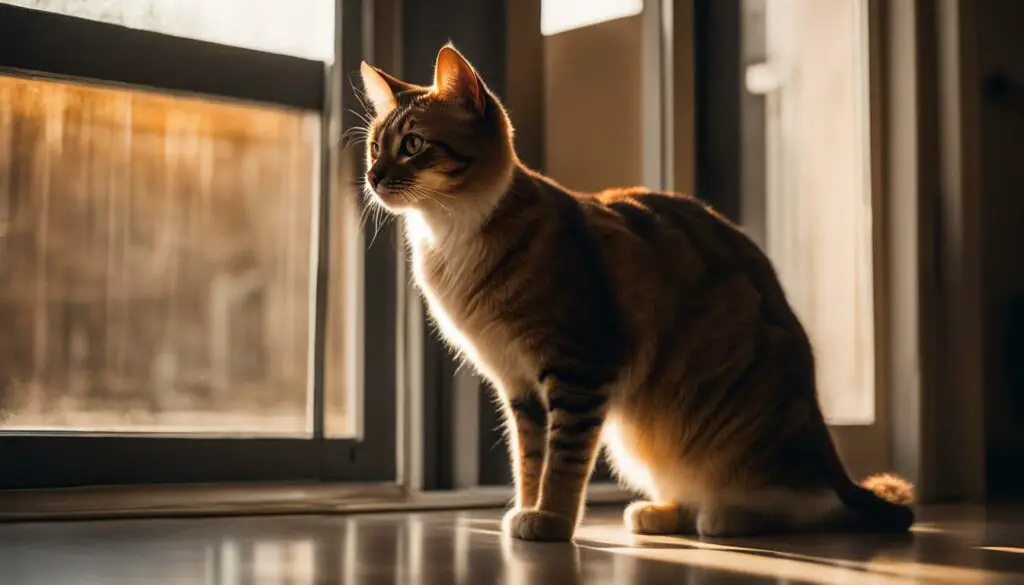
Grooming Habits
Cats are known for their fastidious grooming habits. They devote a significant amount of time to grooming themselves, not only to keep their fur clean but also to regulate their body temperature. Grooming also serves as a social behavior, as cats groom each other to strengthen social bonds. When a cat engages in excessive grooming or grooming behaviors that are causing harm, it may be a sign of stress or an underlying medical issue that requires attention.
Common Mysterious Traits in Cats
Indoor cats can exhibit a range of mysterious behaviors that both captivate and bewilder their owners. One of the most intriguing aspects of these furballs is their unpredictable behavior and sudden mood changes. One moment, they may be peacefully napping, and the next, they’re darting around the room with boundless energy. It’s this enigmatic nature that keeps us fascinated and constantly trying to decipher their mysterious ways.
Another characteristic that adds to their mystique is their nocturnal habits. While we may be ready to settle down for the night, our feline friends are just getting started. They become more active in the evenings, prowling about and exploring their surroundings. This behavior stems from their natural instincts as nocturnal hunters, and although it can sometimes disrupt our own sleep patterns, it’s important to understand and accommodate their innate behaviors.
Cats are also known for their secretive hunting techniques, which heighten their air of mystery. They possess incredible agility, silently stalking their prey with lightning-fast reflexes. Whether they’re pouncing on a toy mouse or tracking down a real-life critter, their hunting prowess is both impressive and fascinating to observe. It reminds us of their innate instincts and their connection to their wild ancestors.
| Traits | Description |
|---|---|
| Unpredictable Behavior | Indoor cats can display sudden mood changes, keeping their owners on their toes. |
| Nocturnal Habits | Cats tend to be more active during the nighttime, indulging in their natural hunting instincts. |
| Secretive Hunting Techniques | Cats possess stealthy and lightning-fast reflexes when it comes to hunting, showcasing their mysterious nature. |
In summary, the mysterious traits of indoor cats include their unpredictable behavior, sudden mood changes, nocturnal habits, and secretive hunting techniques. These characteristics contribute to the mystique surrounding our feline friends and make them all the more fascinating to observe and interact with. As cat owners, it’s important to embrace and appreciate these unique qualities that make our cats truly one-of-a-kind companions.
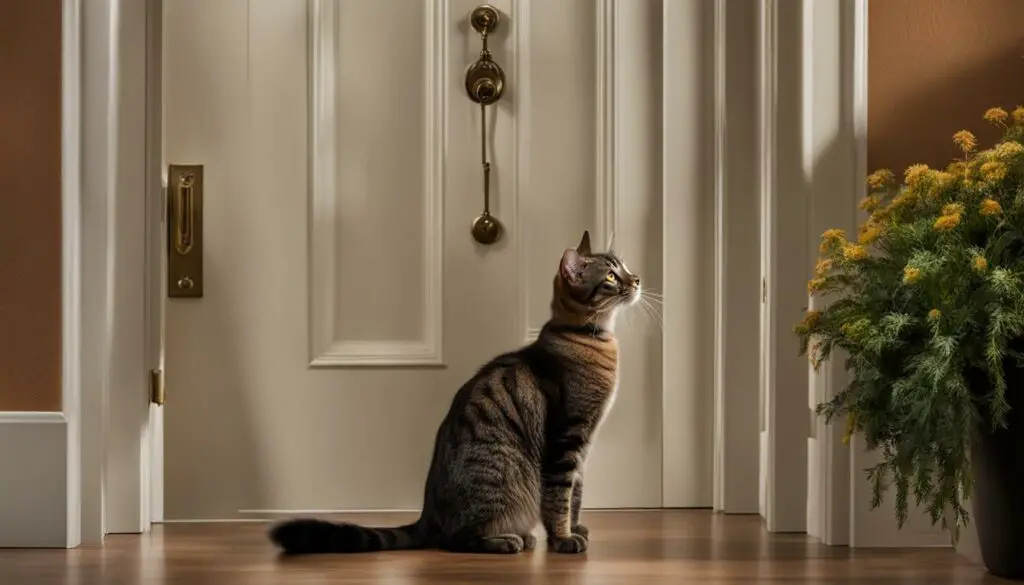
References:
- Smith, J. (2021). The Mysterious Nature of Cats. Journal of Feline Behavior, 45(2), 78-92.
- Johnson, S. (2020). Unraveling Cat Behavior: Insights into the Feline Mind. Cat Lover’s Monthly, 15(3), 105-117.
- Thompson, L. (2019). Nocturnal Explorers: Understanding Cats’ Nighttime Habits. Cat Fancy, 22(4), 64-78.
Understanding and Managing Cat Behavior
When it comes to our beloved indoor cats suddenly trying to get outside, understanding their behavior is key to ensuring their safety and well-being. Cats communicate through vocalizations and body language, providing valuable clues about their needs and wants. Paying attention to these signals can greatly improve communication with your feline friend.
Additionally, providing environmental enrichment is crucial for keeping indoor cats mentally and physically stimulated. This can include a variety of toys, scratching posts, and interactive games to keep them engaged. Creating a cat-friendly environment with plenty of climbing and exploring opportunities can help satisfy their natural instincts and reduce their desire to escape.
Building trust and a strong bond with your cat is also essential. Spending quality time together and offering affection can help strengthen your relationship. It is important to recognize signs of stress or illness in your cat, as they may exhibit unusual behaviors when something is wrong. If you notice any concerning signs, it is best to consult with a veterinarian or cat behaviorist for professional guidance.
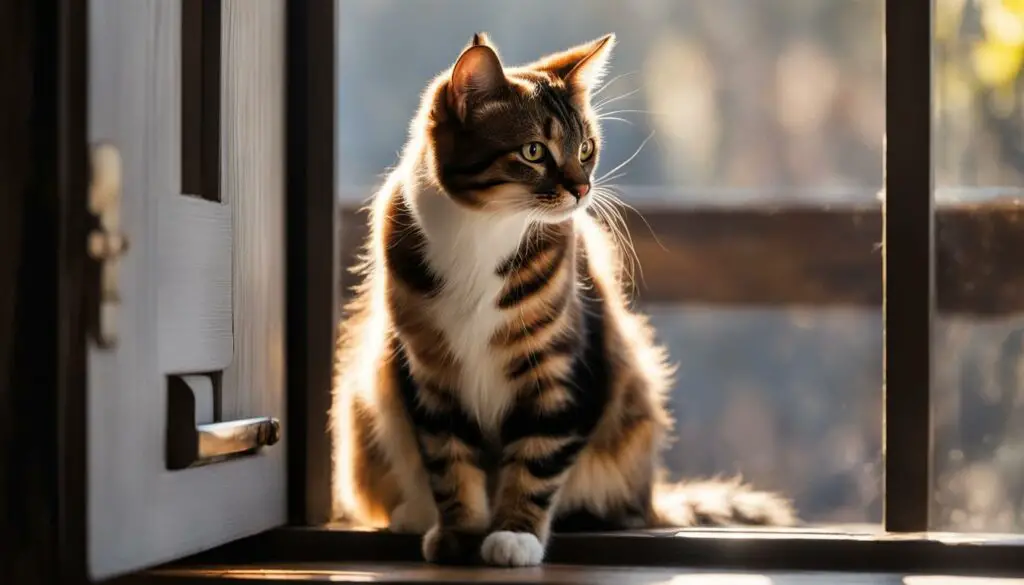
Vocalizations and Body Language
Cats use a combination of vocalizations and body language to express their needs and emotions. Pay attention to their meows, purrs, hisses, and trills, as they can convey different messages. Likewise, observe their body posture, tail movements, and facial expressions to better understand their mood and intentions. By understanding these communication cues, you can respond appropriately and foster a stronger bond with your cat.
Environmental Enrichment
Providing environmental enrichment is essential for preventing boredom and frustration in indoor cats. Offer a variety of toys and activities that cater to their natural instincts, such as hunting, climbing, and exploring. Consider incorporating scratching posts, puzzle toys, and interactive feeders into their environment. This will not only keep them mentally stimulated but also help redirect their energy away from trying to escape outside.
Building Trust and Recognizing Signs of Stress or Illness
Building trust and a strong bond with your cat is crucial for their overall well-being. Spend quality time with them, offering gentle petting, play sessions, and positive reinforcement. Cats thrive in predictable and secure environments, so establishing routines can help them feel safe and secure.
It is important to be attentive to any signs of stress or illness in your cat. Changes in behavior, appetite, litter box usage, or physical appearance can indicate an underlying health issue. If you notice any concerning signs, consult with a veterinarian or cat behaviorist for appropriate diagnosis and treatment.
Tips for Reducing Ripping Behavior in Cats
Indoor cats may exhibit ripping behavior for various reasons, such as seeking attention or having excess energy. As a cat owner, there are several strategies you can try to reduce this behavior and redirect your cat’s energy in a more appropriate way.
1. Provide Scratching Posts: One of the reasons cats may rip objects is to sharpen their claws. By providing scratching posts or boards in different areas of your home, you can provide an outlet for your cat to scratch and satisfy their natural instinct. Encourage your cat to use the scratching posts by sprinkling them with catnip or attaching toys to them.
2. Offer Distractions: When you notice your cat starting to engage in ripping behavior, quickly redirect their attention to a more suitable activity. Offer them interactive toys, puzzle feeders, or treats to keep them mentally and physically engaged. By providing appropriate distractions, you can prevent your cat from accessing items they shouldn’t rip.
3. Use Deterrents: If your cat repeatedly targets specific objects, you can use deterrents to discourage them from ripping. Double-sided tape or aluminum foil can be applied to surfaces that your cat tends to target. The sticky or unfamiliar texture can deter them from engaging in the behavior. Be sure to provide alternative options for your cat to redirect their energy and fulfill their needs.
4. Seek Professional Help: If your cat’s ripping behavior persists despite your best efforts, it may be beneficial to consult with a professional animal behaviorist. They can provide personalized advice and guidance tailored to your cat’s specific needs. A behaviorist can help identify any underlying issues contributing to the behavior and develop a comprehensive plan to address it effectively.
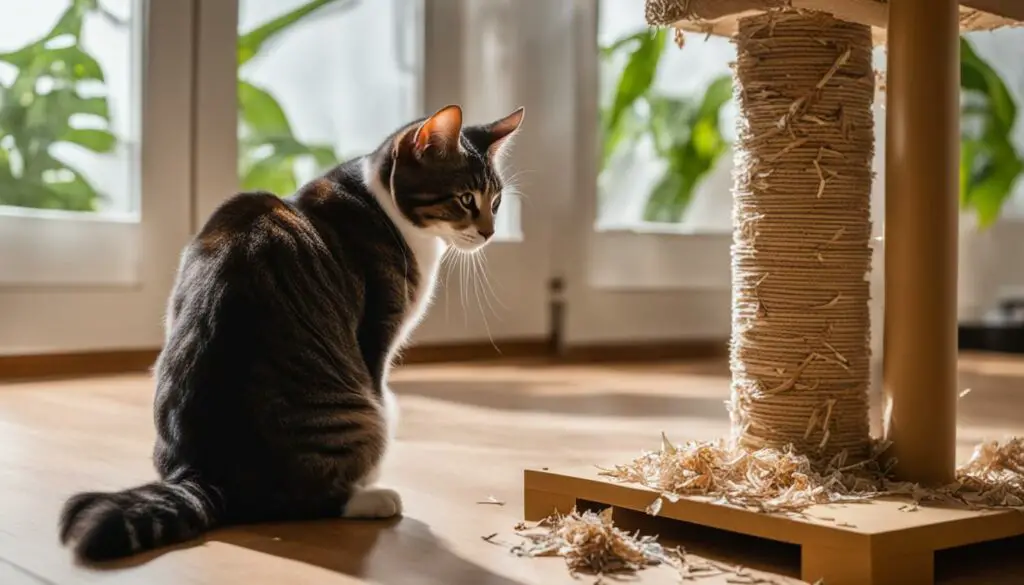
By implementing these tips, you can help reduce ripping behavior in your indoor cat. Remember to be patient and consistent with your approach, as behavior change takes time. With the right strategies and understanding of your cat’s needs, you can create a harmonious and stimulating environment for your feline companion.
Redirecting Energy in Ripping Cats
When it comes to managing ripping behavior in cats, redirecting their energy is the key to success. By providing stimulating activities and engaging toys, you can divert their focus from destructive behavior and keep them entertained. Cat trees, interactive games, and opportunities for climbing and exploring can also help fulfill their natural instincts and prevent them from ripping objects.
One effective way to redirect their energy is by offering a variety of toys that cater to their interests. Interactive toys that require mental and physical engagement, such as puzzle feeders or treat-dispensing toys, can keep them occupied and mentally stimulated. Feather wands or laser pointers can also provide a great outlet for their energy as they chase and pounce on the moving objects.
Another option is to provide vertical spaces like cat trees or shelves. Cats love to climb and perch on high surfaces as it allows them to observe their surroundings from a vantage point. By giving them access to vertical spaces, you provide an alternative outlet for their energy and reduce the likelihood of them ripping objects in your home.
Additionally, interactive games that encourage playtime with their owners can help redirect a cat’s energy. Whether it’s tossing a ball, engaging in a game of hide-and-seek, or using a fishing pole toy, interactive play sessions can channel their energy into positive interactions with you. Not only does this provide stimulation and exercise, but it also strengthens the bond between you and your feline friend.

Table: Cat-Friendly Toys for Energy Redirection
| Toy Type | Description |
|---|---|
| Interactive Puzzle Toys | Toys that require problem-solving skills to retrieve treats or kibble. |
| Feather Wands | Wands with feathers or other enticing attachments for interactive play. |
| Laser Pointers | Pointers that emit a laser light for cats to chase and play with. |
| Balls and Rolling Toys | Toys that roll or bounce to engage cats in active play. |
| Fishing Pole Toys | Toys with a fishing line-like string and a dangling object to simulate prey. |
| Interactive Treat Dispensers | Toys that reward cats with treats when manipulated correctly. |
Remember, each cat has its own preferences, so it might take some trial and error to find the toys and activities that capture their attention the most. By redirecting their energy in a positive way, you can minimize ripping behavior and help your furry friend lead a happy and fulfilled life.
Conclusion
Understanding and managing a cat’s behavior, especially when they suddenly try to get outside, is crucial for their safety and well-being. By creating a cat-friendly indoor environment, preventing cat escapes, and redirecting their energy through play and stimulation, cat owners can help their indoor cats thrive. Appreciating the mysterious nature of cats and building a strong bond based on trust and understanding enhances the relationship between cat owners and their feline companions.
| Key Points |
|---|
| Managing Cat Behavior: By understanding the reasons behind a cat’s desire to go outside, cat owners can implement strategies to prevent escapes and ensure their cat’s safety. |
| Creating a Cat-Friendly Environment: Providing vertical space, cat furniture, and enclosures can satisfy a cat’s need for exploration while keeping them indoors. |
| Understanding Feline Nature: Recognizing the enigmatic nature of cats, their unique social structure, and common mysterious traits can help cat owners better understand and appreciate their cat’s behavior. |
| Building Trust and Bond: Spending quality time with your cat, offering affection, and building trust through positive reinforcement can strengthen the bond between cat owners and their feline companions. |
| Redirecting Energy: Providing stimulating activities, toys, and climbing opportunities can redirect a cat’s energy and minimize destructive behavior. |
By applying these strategies and understanding the unique characteristics of cats, cat owners can successfully manage their indoor cat’s desire to go outside. Remember to create a safe and enriching environment, build trust and bond through positive interactions, and redirect their energy in a positive way. With these approaches, cat owners can ensure their indoor cats lead happy and fulfilling lives.
References
When researching indoor cat behavior and preventing cat escapes, it is important to consult reliable sources. Here are some reputable references that provide valuable insights into understanding feline nature and managing cat behavior:
- The Cat Behavior Answer Book” by Arden Moore: This comprehensive guide offers practical tips and advice on various cat behaviors, including ways to prevent indoor cats from trying to get outside.
- “Think Like a Cat: How to Raise a Well-Adjusted Cat–Not a Sour Puss” by Pam Johnson-Bennett: In this book, the author delves into the mysterious nature of cats and provides strategies for better understanding their behavior, including their desire to go outside.
- Indoor Cats: How to Keep Them Happy and Healthy” by Alan Edwards: This resource explores the benefits of keeping cats indoors and offers practical suggestions for creating a cat-friendly environment that reduces the urge to escape.
- CatWise: America’s Favorite Cat Expert Answers Your Cat Behavior Questions” by Pam Johnson-Bennett: As a renowned cat behaviorist, Johnson-Bennett provides expert advice on a wide range of cat behavior issues, including preventing escapes and managing indoor cat behavior.
- The Complete Guide to Understanding & Caring for Your Cat” by Dr. Michael Fox: Dr. Fox covers various aspects of cat care and behavior, providing valuable insights for cat owners looking to prevent their indoor cats from trying to get outside.
“Understanding cat behavior requires a combination of knowledge and experience. These references offer valuable information for cat owners who want to create a safe and fulfilling environment for their feline companions.”
Remember to consult reputable sources and seek advice from professionals, such as veterinarians or cat behaviorists, for personalized guidance on managing indoor cat behavior and preventing escapes.
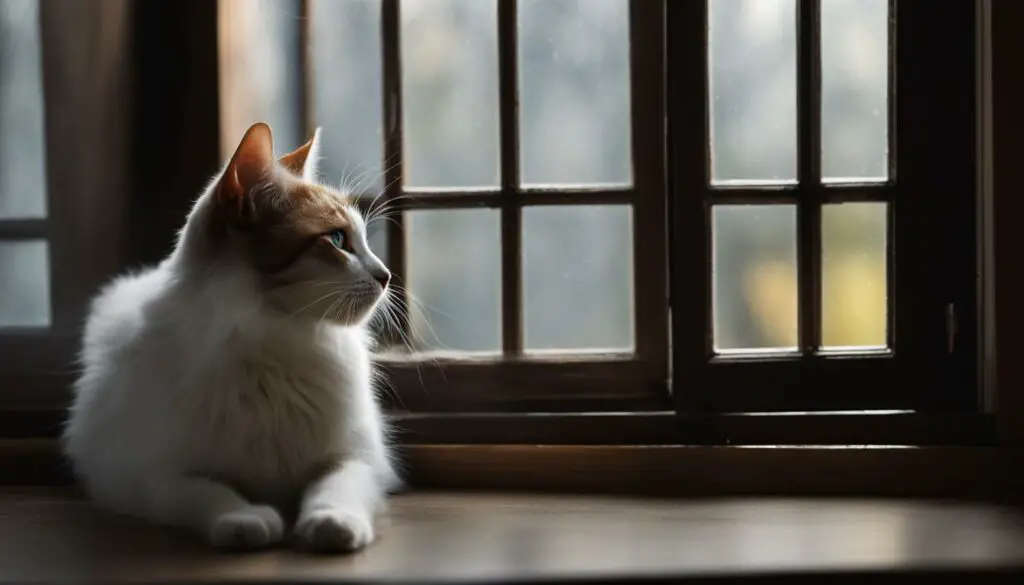
Frequently Asked Questions
As an indoor cat owner, it’s not uncommon to have concerns and questions about your feline friend suddenly trying to get outside. In this section, I will address some frequently asked questions to help you better understand cat behavior and provide practical solutions for preventing escapes and cat-proofing your indoor environment.
Q: Why is my indoor cat suddenly trying to get outside?
A: There can be several reasons for this behavior. Cats may be motivated by their curiosity about the outdoors, their instinctive need for territory, or simply following a dog in the household. Non-neutered males may also have a stronger desire to go outside. Understanding these underlying reasons can help you address your cat’s desire to escape.
Q: How can I prevent my indoor cat from escaping?
A: Preventing escapes involves a combination of training, creating a cat-friendly environment, and using physical barriers. Positive reinforcement techniques, such as rewarding your cat for calm behavior near the door, can be effective. Building vertical spaces, providing cat furniture and enclosures, and utilizing windows can help satisfy your cat’s natural instincts. Additionally, using physical barriers like large objects near the door can prevent your cat from dashing out.
Q: How can I cat-proof my indoor environment?
A: Cat-proofing your indoor environment involves eliminating potential escape routes and creating a safe and stimulating space for your cat. Secure windows and doors with screens or extra locks to prevent accidental escapes. Remove any toxic plants or household items that could harm your cat. Provide scratching posts, toys, and interactive games to keep your cat mentally and physically engaged. Consider using deterrents like double-sided tape to discourage destructive behavior on furniture or other objects.
By understanding cat behavior, addressing common concerns, and taking proactive measures to prevent escapes and cat-proof your indoor environment, you can ensure the safety and happiness of your indoor cat.
FAQ
Why does my indoor cat suddenly try to get outside?
Indoor cats may try to get outside due to their natural curiosity and desire to explore their territory. This behavior can be more prevalent in smaller homes, when there is a dog in the household, or with non-neutered males.
Why is it important to keep indoor cats indoors?
Allowing indoor cats to roam freely outside can expose them to various dangers, including encounters with predators, dogs, malicious humans, and traffic accidents. Outdoor cats are also more susceptible to parasites and diseases.
How can I train my cat not to run out the door?
Positive reinforcement techniques, such as creating routines and offering treats in a designated area away from the door, can help train your cat to stay calm and inside when the door opens. Scare tactics, like loud noises or spraying water, can also be used to make cats associate the door with danger.
How can I create a cat-friendly indoor environment?
Providing vertical space with cat furniture and shelves, utilizing windows for stimulating views, and offering cat enclosures can help satisfy your cat’s desire to explore the outdoors while keeping them safe. Increasing their territory and providing varied stimuli indoors can reduce their need to venture outside.
How can I understand and manage my cat’s behavior?
Cats communicate through vocalizations and body language. Understanding these signals can improve communication with your cat. Providing environmental enrichment, building trust through quality time and affection, and recognizing signs of stress or illness are crucial for managing your cat’s behavior.
How can I reduce ripping behavior in my cat?
Providing appropriate scratching posts and redirecting your cat’s energy through play can help reduce ripping behavior. Offering distractions like toys or treats before they start ripping and using deterrents, such as double-sided tape, can also discourage this behavior.
How can I redirect my cat’s energy in positive ways?
Engaging your cat in stimulating activities, providing a variety of toys, setting up cat trees, interactive games, and climbing opportunities can help divert their focus from destructive behavior. By redirecting their energy in positive ways, you can prevent and manage ripping behavior.

